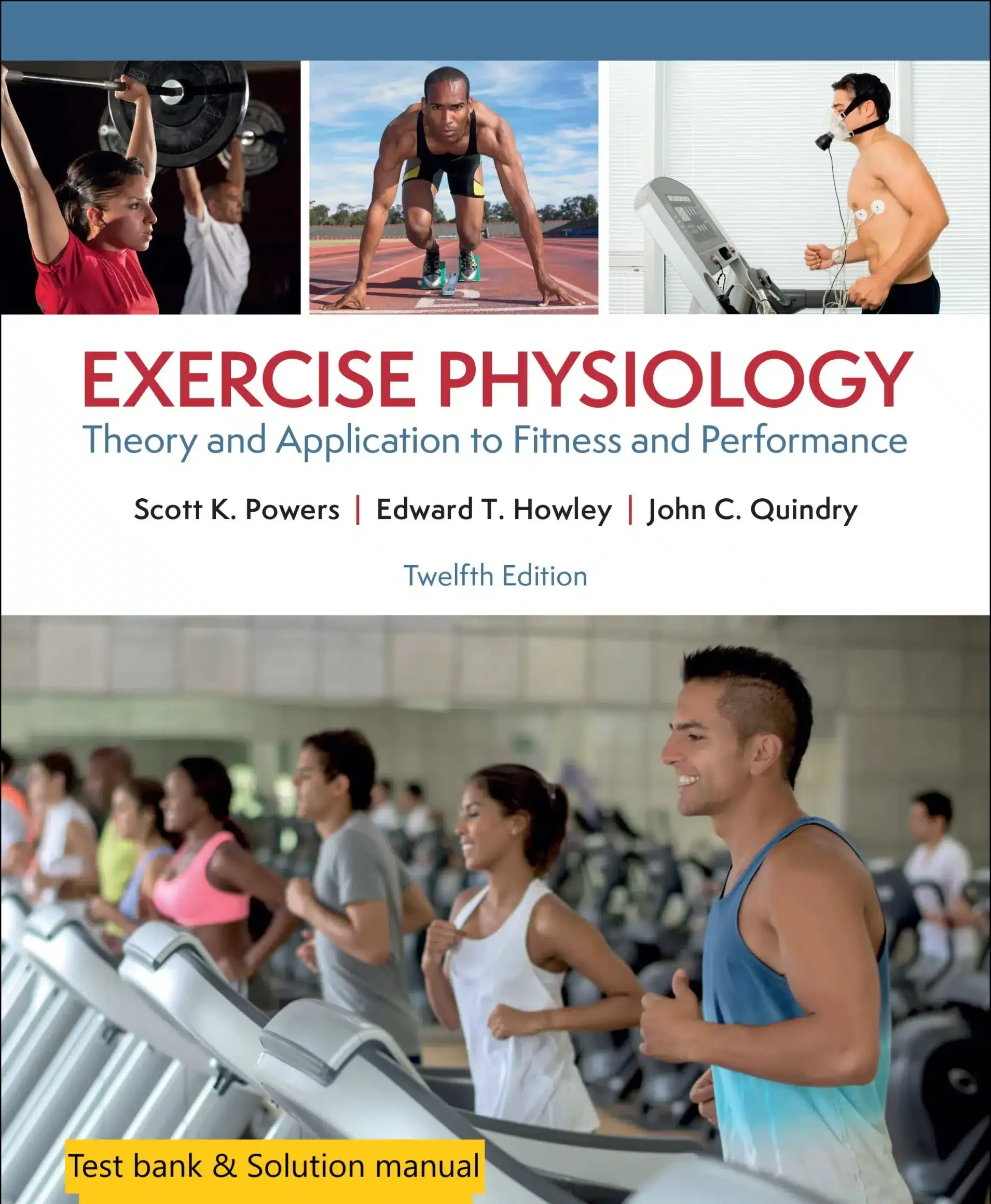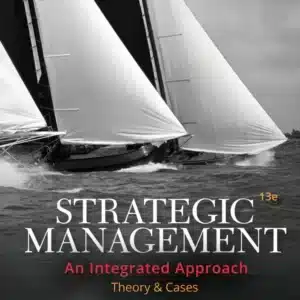Original price was: $79.99.$34.99Current price is: $34.99.
Test bank & Solution manual for Exercise Physiology Theory and Application to Fitness and Performance, 12th Edition By Scott Powers,© 2024
![]()
Product ID: 0909
For Contact: bookzon.shop@gmail.com
Description
Exercise Physiology: Theory and Application to Fitness and Performance (12th Edition)
By Scott Powers & Dr. John Quindry (©2024)
Test Bank & Solution Manual
![]()
Overview
The 12th Edition of Exercise Physiology: Theory and Application to Fitness and Performance is a cutting-edge, comprehensive textbook crafted for students pursuing careers in fields such as exercise physiology, clinical exercise physiology, kinesiology, human performance, physical therapy, and physical education. The book offers an in-depth exploration of the physiological processes involved in exercise, emphasizing the latest research and its practical applications. With a focus on clinical relevance, this edition provides an exceptional resource for both learning and teaching the complex physiological concepts related to fitness and performance.
In this edition, Dr. John Quindry joins the author team, bringing expertise to new chapters and expanding the scope of the book. Notably, three fresh chapters explore the intersection of exercise and medicine, highlighting the importance of exercise in disease prevention and therapy. This allows instructors the flexibility to customize the content to suit their specific course needs.
Table of Contents
Section 1: Physiology of Exercise
-
Chapter 0: Introduction to Physiology of Exercise
An overview of fundamental concepts and the significance of exercise physiology. -
Chapter 1: Common Measurements in Exercise Physiology
Understanding the tools and techniques used to measure physiological responses during exercise. -
Chapter 2: Control of the Internal Environment
Explores how the body maintains internal stability (homeostasis) during exercise. -
Chapter 3: Bioenergetics
Discusses the energy systems that fuel exercise, including ATP production and energy substrates. -
Chapter 4: Exercise Metabolism
Examines metabolic changes during different types of exercise and their impact on performance. -
Chapter 5: Cell Signaling and the Hormonal Responses to Exercise
Details the role of hormones and cellular signals in exercise-induced changes. -
Chapter 6: Exercise and the Immune System
Explores how exercise affects immune function, including the immune system’s response to physical stress. -
Chapter 7: The Nervous System: Structure and Control of Movement
A deep dive into the nervous system’s role in controlling and coordinating movement during exercise. -
Chapter 8: Skeletal Muscle: Structure and Function
Discusses the structure, function, and adaptation of skeletal muscles in response to exercise. -
Chapter 9: Circulatory Responses to Exercise
Investigates how the cardiovascular system responds to physical activity and supports performance. -
Chapter 10: Respiration during Exercise
Explains how respiratory function adapts during exercise to meet increased oxygen demands. -
Chapter 11: Acid-Base Balance during Exercise
Focuses on the regulation of pH during intense physical activity and its impact on performance. -
Chapter 12: Temperature Regulation
Details the body’s mechanisms for maintaining temperature balance during exercise. -
Chapter 13: The Physiology of Training: Effects of Aerobic and Anaerobic Training
Analyzes how different training regimens influence aerobic and anaerobic energy systems. -
Chapter 14: The Physiology of Resistance Training
Explores the physiological adaptations to resistance training and its impact on strength and muscle mass.
Section 2: Physiology of Health and Fitness
-
Chapter 15: Exercise Is Medicine—Part 1: Prevention of Chronic Diseases
Discusses how exercise can prevent chronic conditions like heart disease, diabetes, and obesity. -
Chapter 16: Exercise is Medicine—Part 2: Therapy for Chronic Diseases and Prevention of Age-related Physiological Dysfunction
Explores the therapeutic role of exercise in managing chronic diseases and age-related health decline. -
Chapter 17: Exercise is Medicine—Part 3: Exercise Prescriptions for Health and Fitness
Provides practical guidelines for prescribing exercise to improve health outcomes. -
Chapter 18: Nutrition, Body Composition, and Weight Management
Focuses on the critical relationship between nutrition, body composition, and effective weight management strategies.
Section 3: Physiology of Performance
-
Chapter 19: Factors Affecting Performance
Identifies the various physiological and environmental factors that influence athletic performance. -
Chapter 20: Training for Performance
Offers insights into training strategies to enhance physical performance across different sports. -
Chapter 21: Training for the Female Athlete, Children, Special Populations, and the Masters Athlete
Discusses how training regimens should be tailored to meet the unique needs of different population groups. -
Chapter 22: Nutrition, Body Composition, and Performance
Analyzes how nutrition and body composition directly affect athletic performance. -
Chapter 23: Exercise and the Environment
Examines how environmental factors, such as heat and altitude, impact exercise performance and safety. -
Chapter 24: Ergogenic Aids
Investigates various performance-enhancing substances and techniques used by athletes.
Appendices
-
Appendix A: Calculation of Oxygen Uptake and Carbon Dioxide Production
Provides methods for calculating oxygen and carbon dioxide production during exercise. -
Appendix B: Dietary Reference Intakes: Estimated Energy Requirements
Details recommended energy intake values based on age, gender, and activity level. -
Appendix C: Dietary Reference Intakes: Vitamins
A comprehensive guide to the vitamins necessary for optimal health and performance. -
Appendix D: Dietary Reference Intakes: Minerals and Elements
Describes the essential minerals and trace elements required for physiological function. -
Appendix E: Percent Fat Estimate for Men: Sum of Triceps, Chest, and Subscapula Skinfolds
A formula for estimating body fat percentage in men using skinfold measurements. -
Appendix F: Percent Fat Estimate for Women: Sum of Triceps, Abdomen, and Suprailium Skinfolds
A formula for estimating body fat percentage in women using skinfold measurements. -
Appendix G: MET Equivalents for Exercise, Activities of Daily Living, and Household Chores
Lists the metabolic equivalents (METs) for common activities to estimate energy expenditure.






Replaces tutoring
Guaranteed results
Very useful
Rich content
Step-by-step explanation